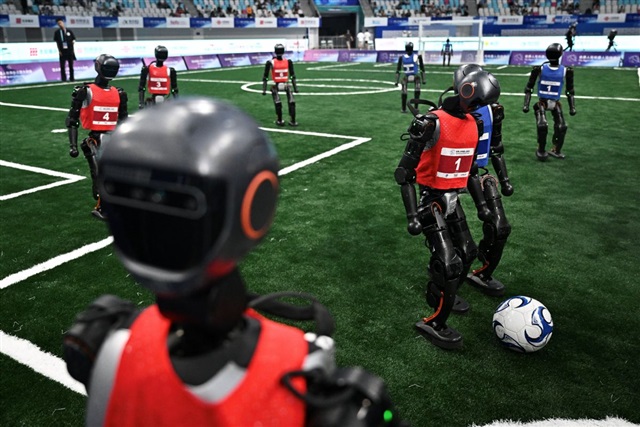China is actively advancing investment and building an ecosystem in the humanoid robot industry, according to the Nomura Research Institute (NRI), which released a report on the current status of China's humanoid robot industry during a press briefing in July 2025.
China has stepped up Investments in the humanoid robot field since 2024, with humanoid robots accounting for nearly half of all investment projects in the country in 2024. According to a report from the market consultancy firm Shenzhen Gaogong Industrial Institute (GGII), the humanoid robot sector saw a total of 71 financing cases in 2024, or 3.7 times the number seen in 2023; the amount thus raised reached CNY 8.45 billion (US$1.177 billion), or 3.3 times that of 2023.
As of December 2024, more than 110 Chinese companies are developing humanoid robot bodies, accounting for half of the global total. By contrast, the US is home to 20% of global humanoid robot makers, Japan 10%, and the rest of the world accounts for the remaining 20%
NRI also concluded that about half of the financing cases in China's robot industry in 2024 were related to humanoid robots, citing publicly available information such as the 2024 China Robot Industry Financing Overview from China Robot Network.
However, most humanoid robots remain at an early stage in development, capable only of performing simple tasks. Current technical challenges include difficulties with autonomous walking, insufficient battery life, and joint overheating.
The China Academy of Information and Communications Technology (CAICT) has a five-tier classification of humanoid robot capabilities, with the highest level featuring embodied AI that is fully capable of environmental interaction and learning. If this goal is achieved, over 100 million units could be deployed globally across various applications, potentially representing a market worth CNY 10 trillion (US$1.39 trillion).
Official risk-tolerant policies aim to stimulate development
In addition to substantial government funding in the field, China has also established a risk tolerance mechanism to foster innovation, allowing some projects to bear 100% losses through trial-and-error development processes.
China is also aiming for self-sufficiency in terms of core upstream components and software, as Chinese manufacturers have now mastered midstream humanoid robot body production. In addition, a comprehensive value chain is now taking shape with emerging downstream application scenarios.
Citing a Morgan Stanley report from February 2025, NRI notes that Chinese enterprises account for more than 30% of the 100 global listed companies in the humanoid robot value chain, which comprises three main categories: brain, integrator, and body. In the brain segment, two out of the 22 companies: Baidu and Horizon Robotics.
In the integrator category, nine of the 22 global listed companies are Chinese, including Alibaba, BYD, Xiaomi, Tencent, Xpeng Motors, Guangzhou Automobile Group (GAC), UBtech Robotics, Estun Automation, and Midea Group.
Chinese manufacturers dominate the body category, accounting for 21 of the 64 listed companies, including battery makers CATL and EVE Energy, bearing manufacturer Shuanglin Group, screw manufacturer Jiangsu Hengli, and Shanghai Beite Technology.
Even so, China's humanoid robot industry still faces three main issues: immature algorithms, lack of high-quality training data, and US limits on technology exports that have hindered China's advanced semiconductor research and computing capabilities.
Article edited by Joseph Chen



